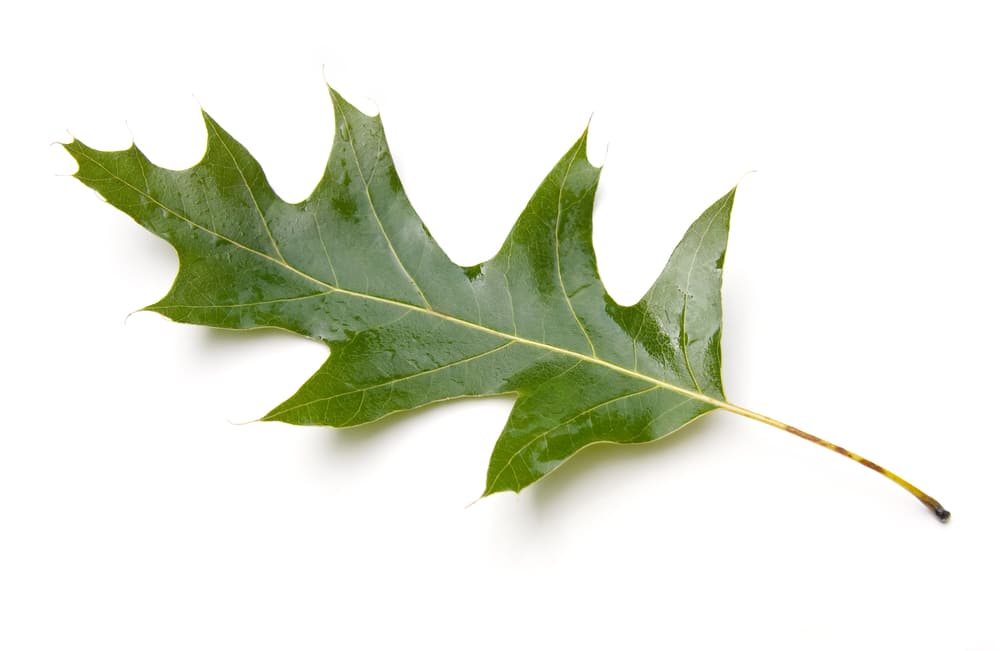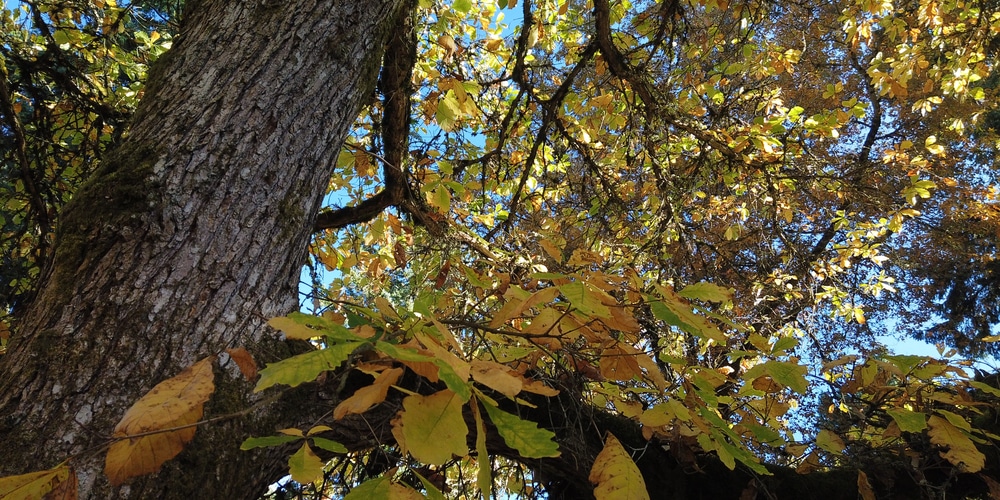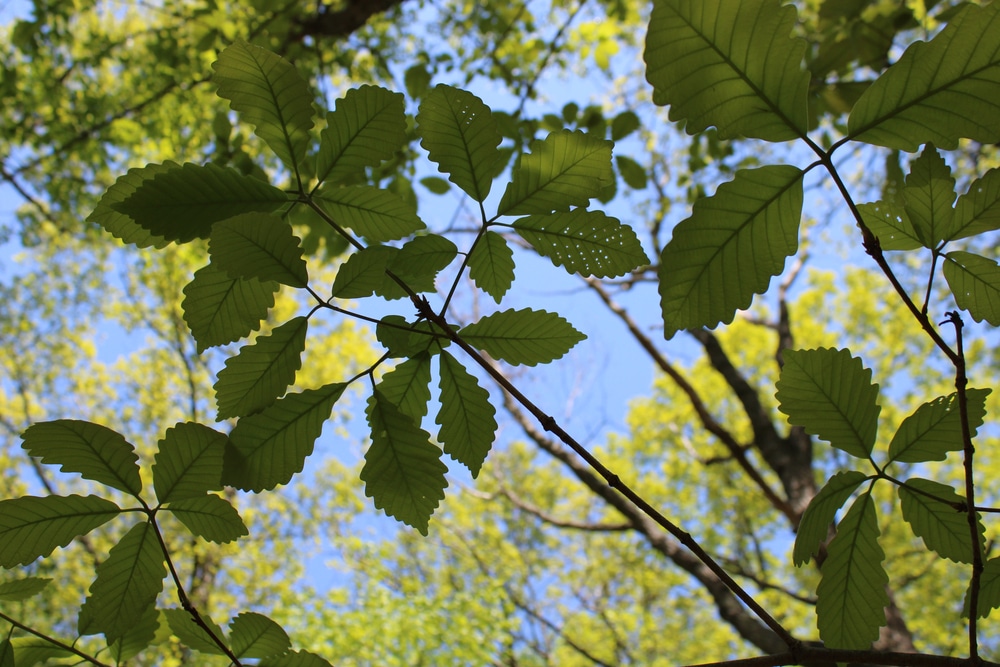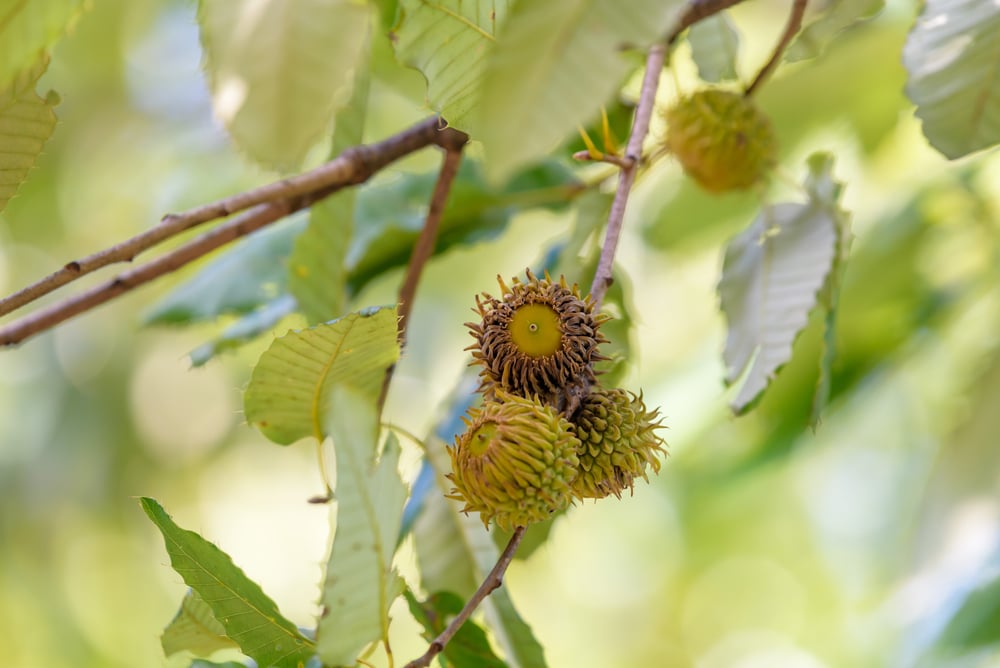Oak trees are a diverse type of tree, native to North America, Europe, and Asia. Today, you can find a variety of oak trees in Ohio, both species that are local and ones that may be invasive or non-native.
With this list, you can start to identify the many beautiful oak trees of Ohio.
Native Oak Trees in Ohio
First, here’s a short list of a few of the native oak trees of Ohio. There are other native oak trees in the state not included on this list.
1. Black Oak

Black Oak trees get their name from their nearly black bark, a stunning feature against the red buds you may see in the winter.
If you peel the black bark, you might find a yellow or orange interior. Some find the bark helpful for dye.
In the fall, Black Oak trees tend to have orange and red leaves.
These remarkable trees have lobed leaves, and you often encounter them in areas with dry soil. Black Oak always avoids shade.
2. White Oak
Next up is White Oaks. These trees have spread across the eastern side of the United States. The name comes from the white underside of the leaves, the light-colored bark, and the white color of the wood when cut.
This tree is a crucial part of the hardwood industry, often used for flooring, construction beams, and furniture.
In fall, you might see White Oak with red-brown to red-purple leaves. They populate several settings, from dense forests to open fields.
3. Chestnut Oak
Finally, the Chestnut Oak is another light oak that stretches across the eastern United States.
You can identify these oak trees from their large leaves, up to 11 inches long. The leaves often have an almost spiky appearance.
The bark of the Chestnut Oak is usually deep, gray, and dense, leading to the tree sometimes being called Rock Chestnut Oak.
Non-native Oak Trees in Ohio
While this isn’t an exhaustive list, the following three entries are some of the most prominent non-native oak trees in Ohio.
Some non-native trees can be invasive, with a potentially harmful impact on the local environment. Yet not all non-native trees are invasive, with several not having a negative presence on the resources available for native oak varieties.
1. Nuttall Oak
The Nuttall Oak is ideal for parks or landscaping as they grow quickly. Additionally, these trees can thrive in almost any soil condition.
Nuttall Oak trees have dark brown bark and large, pointed leaves. They provide plenty of shade cover.
In the fall, you can expect Nuttall Oak trees to shift through a broad color spectrum from yellow, to orange, to red.
2. Sawtooth Oak
This invasive species is easy to identify. As the name implies, the leaves of this tree are thin with saw-like spikes on the edges. Another way to identify these trees is their unique acorns, with caps that appear fuzzy and spiked.
Sawtooth Oaks are native to Asia. At first, the Sawtooth Oak was planted in North America as a food source for wildlife.
These trees enjoy living in the shade and can tolerate most soil. You can expect bright, yellow leaves to be visible during fall.
3. Turkey Oak
Finally, the Turkey Oak tree is sometimes encountered in parks but rarely in nature.
These trees are non-native to Ohio, and it’s clear from their name, as it reveals this “type species” originates from Turkey. This tree has a native spread from Europe to Asia.
It is not considered to have the potential to be invasive. This tree is ideal for cities because it can handle drought, cold, air pollution, and various soil conditions. The broad leaves provide cover and are typically a glossy green color.
Their acorns are distinct from native oaks as they possess a somewhat “whiskery” look.
Conclusion
These are just a few of the many oak trees in Ohio you can find. Oak trees are ideal for adding shade to an area, and they often have a beautiful display of colors in the fall.
With some of these descriptions, it’ll soon be a breeze to identify some of the native and non-native oak trees of Ohio. And, if you fall in love with some of these remarkable oak trees, you can always take the next step and start planting in your area.


